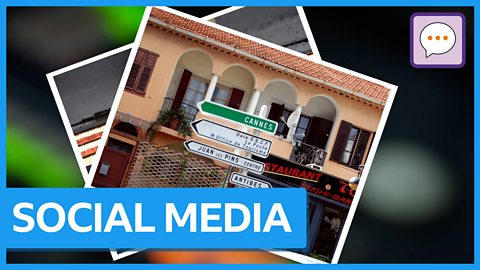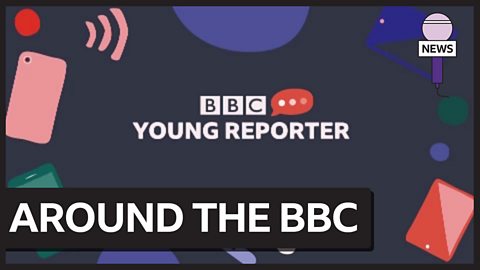Fake news is now part of our every-day vocabulary and it feels like it’s everywhere. So how do you know who to believe?
For a journalist, there’s no such thing as alternative facts – there’s either real news or fake news. Checking stories with trusted sources is a key part of a journalist’s job. Here, BBC newsreader Tina Daheley explains how she checks the facts when reporting on the latest news.
Tina Daheley: Mark Zuckerberg once wrote that identifying the truth is complicated. That may be true if you’re an algorithm or a bot but as a journalist it’s something I have to do every day. I check the facts. I check the source and I check that I can trust the source – that’s a big part of a journalist’s job. In fact, it’s something we could all do when we read stories online or on social media. Here’s how:
Tina Daheley: Where did the story come from? Journalists get their stories from lots of different places. We get them from other journalists and we also get them from the audience.
Tina Daheley: Who is telling this story? What do we know about them? Why does someone want this story to be told? Do they have the full picture? Could they have made a mistake? We make sure we have at least two sources to verify our story.
Tina Daheley: We need to check the facts and we have to talk to other journalists and independent experts.
Tina Daheley: Is there another side to the story? As well as the facts we can include a range of different opinions.
Tina Daheley: Is there video or pictures associated with the story? Now more than ever it’s important to check where they’ve come from especially if they are from social media. One way of doing this is by using a reverse image search to check if that image has been used to tell a different story before.
Tina Daheley: So that’s how I do it. Think about those things and take a look at these two stories. Good luck.
Student: What story have we got? So, “The Coronavirus source is found. It turns out that many roofs in Hubei, China are covered with a type of bat.” So we’re going to just check his actual page out.
Student: It seems like more of like somebody’s personal page, which doesn’t make it in any way reliable. Let’s see if the video is used anywhere else.
Student: Yeah, here it is. It comes up from a roofing company in Florida from 2011 and not from China. It’s the exact same video.
Student: It’s the exact same video as the one that was on the channel.
Student: This story is a fake.
Student: What story have we got first?
Student: “Some US farmers are feeding cows Skittles.”
Students: Instinctively I think it’s real. It’s the BBC isn’t it?
Student: I’d say fake. There’s no actual like proof saying, it’s just Skittles on a road.
Student: Yeah search “Cows fed Skittles”.
Student: American farmers secretly feed cows defective Skittles because they are cheaper than corn. Andrew Griffin.
Student: Search “Andrew Griffin”.
Student: Andrew Griffin is a technology editor and science reporter.
Student: Really sincere news reporter like journalist.
Student: Go up.
Student: See it’s the police report. Dodge County confirms they’ve fallen off. So it is real because how would they fall off the truck?
Student: I think it’s real because they have enough sources to back it up and because of different information.
Tina Daheley: Asking a few simple questions can actually cut your chances of being conned by a fake story to zero. Of course there are also lots of services that can help you. They spend their days hunting down fake news online and on social media, so we can be sure too. Why not pause before you share and think if what you’re sharing is fact or fake.
Tina's top five tips
Here’s how to decide whether a source should be trusted:
- The story – where did the story come from?
- The author – who is telling this story, and what do you know about them? They may have a reason for sharing or might have made mistakes. Journalists make sure they have at least two sources to verify a story
- Fact check – does all the evidence add up? See if there are any first-hand accounts and if the facts are repeated in other trusted sources
- Expert advice – is there another side to the story? Have a look at a range of different opinions and see who else is telling the story
- Images - is there video or are there pictures in the story? Check them using a reverse image search.
Where next?
Tips for spotting fake news online
Nihal Arthanayake looks at some simple steps which will help separate fact from fake.

Be social media smart: Is seeing believing?
BBC newsreader Tina Daheley looks at how to check what can and can’t be believed.

Fake news and BBC Young Reporter
As part of BBC Young Reporter, top journalists give you the lowdown on how to weigh up what’s real and what’s fake.

Fact or Fake?
Find out how to spot and stop fake news with BBC Bitesize.
